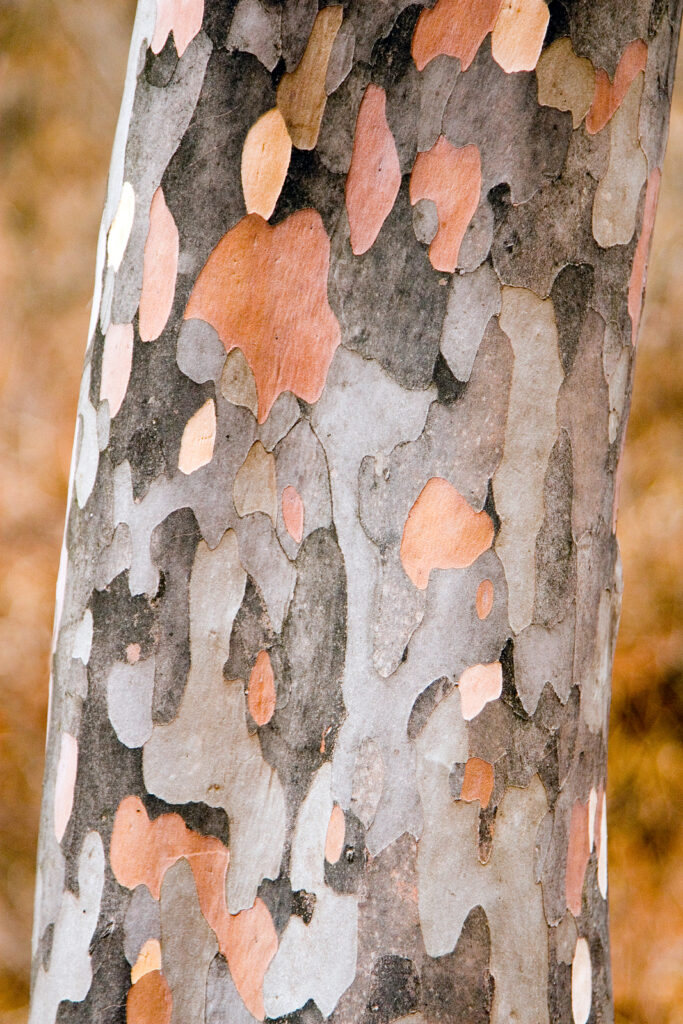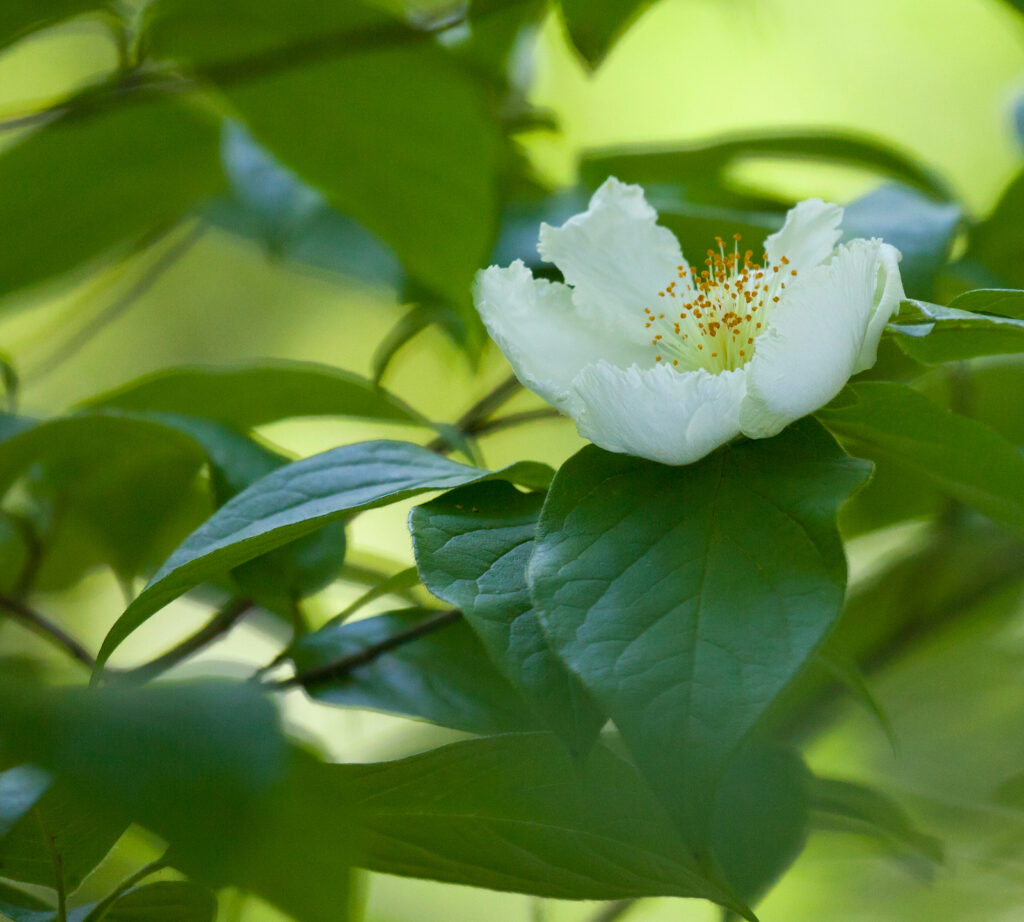Stewartia is a genus of deciduous shrubs and trees that have something for all seasons. Stewartia has green leaves in spring, white camellia-like flowers in summer, colorful foliage in autumn, and a distinctive branching pattern after leaves fall in winter. As well, Stewartia are often grown for their peeling gray and red-brown bark.
Stewartia is a genus of about 15 species. They are native to woodlands in Asia and the Southeastern United States.
Grow Stewartia as a specimen to show off its many attributes.

Get to know Stewartia
- Plant type: Deciduous or evergreen trees or shrubs
- Growing zones and range: USDA Zones 4 or 5 to 7
- Hardiness: Hardy to Zone 5
- Height and width: 30-40 feet (9.1-12.2m)
- Growth rate: Medium to fast
- Form and habit: Dense, pyramidal
- Foliage: Pointed oval 2-3 inch (5.1-7.6cm) long, finely toothed, colorful foliage in fall; winter reveals a distinctive pattern of bare branches and smooth bark that flakes off in varying degrees, depending on species; flakes to show patchwork of green, gray, brown, rust, terra-cotta, and cream
- Flowers: Lovely, camellia-like flowers; solitary 2-2.5 inch (5.1-6.4cm) cup-shaped with orange anthers
- Fruits: Inconspicuous wood hairy capsule 1 inch (2.5cm) long
- Bloom time: Summer
- Uses: Temperate gardens, woodland gardens, foreground specimen, backdrops, fall color, winter interest
- Common name: Stewartia
- Botanical name: Stewartia
- Family name: Theaceae
- Origin: Japan
Where to plant Stewartia
- Plant Stewartia in light afternoon shade.
- Plant Stewartia in well-drained, humus-rich, moist, acid soil with high content of organic matter.
When to plant Stewartia
- Transplant a dormant, young, container-grown Stewartia in early spring to well-drained, humusy, moist, soil that is acid, pH 4.5 to 5.5.
- Sow seed in containers in a cold frame in autumn; may take 2 years to germinate.

Planting and spacing Stewartia
- Once planted, Stewartia do not like to be moved.
- Plant Stewartia 20 feet (6m) apart.
How to water and feed Stewartia
- Give Stewartia regular water; they require sustained moisture, especially in the first year or two after transplanting.
- Feed Salix with an all-purpose organic fertilizer in spring
How to care for Stewartia
- Train Stewartia to a single trunk or several trunks and remove lower branches to expose attractive trunk bark.
- Faded flowers drop and require cleanup.
Stewartia pests and diseases
- Stewartia are usually pest free if given the right conditions.

Stewartia propagation
- Take 3-4 inch (7.6-10.2cm) long cuttings with a heel of older wood in late spring or early summer. Bottom heat may encourage rooting.
- Layer in autumn.
Stewartia varieties to grow
- Stewartia pseudocamellia, Japanese stewartia, Korean stewartia, open-branched and oval or vase shaped, this pretty garden tree grows slowly to 30 feet (9.1m) tall and 20 feet (6.1m) wide. The oval, pointed leaves are 2-4 inches (5.1-10.2cm) long and dark green. Bloom commences in early to midsummer. The 2-3 inch (5.1-7.6cm) wide, cup-shaped, yellow-centered white blossoms open from prominent round buds and have slightly crinkled petals. Each lasts only 1 day, but many flowers bloom each day for 2 to 3 weeks. Fall foliage is luscious, turning many shades of orange, gold, and red, depending on sun exposure. After the dense leaves drop, the flaky bark on the trunk and branches is displayed to perfection as an orange, tan, and apricot patchwork. From Japan and Korea. Zones 5 to 8.















